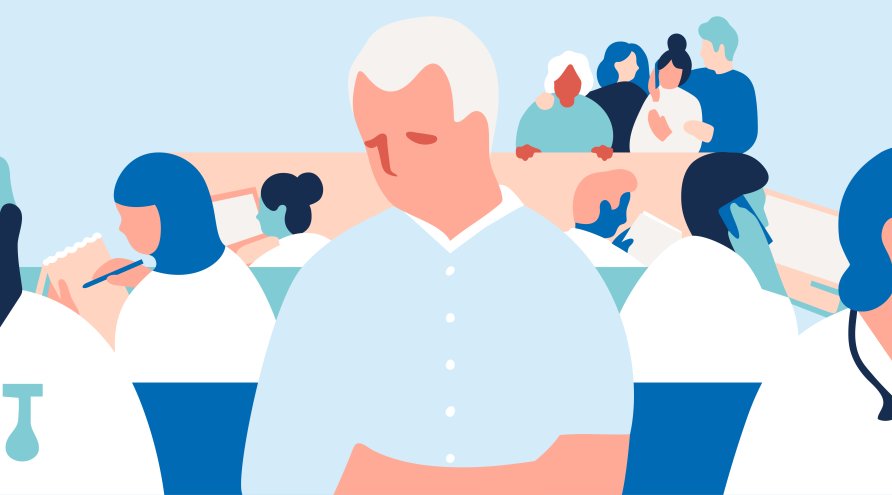The starting point for our report is a notification from the relatives of a man in his early 70s who died of cancer. We have named the man Jan. He died after six months of repeated hospital admissions for various examinations and acute issues. He was diagnosed with cancer a week before he died.
Jan and his relatives experienced during the investigation at the hospital that it was unclear who had the overview and who they should contact. Based on what we know about the experiences of Jan and his relatives, we have examined the investigation period. Several departments and specialists were involved, and the distribution of responsibilities became fragmented and unclear. It was a half-year of unanswered questions, and an investigation that dragged on for Jan and his family. The story highlights challenges with organization, distribution of responsibilities, overview, and information sharing in the investigation of a patient with an unclear condition.
The Norwegian Healthcare Investigation Board (Ukom) has chosen to pay special attention to:
- Coordination across different departments and specialties around patients who are under investigation.
- Involvement and care of the patient and relatives.
The development within medicine with more investigation and treatment options and the requirement for specialization also leads to the specialization of the organization in our hospitals. This development with specialized departments means that patients, especially with an unclear cause of symptoms, often have to deal with multiple departments and many different health personnel. This can lead to insecurity and a poor experience for the patient and relatives.
Specialization, which for many patient groups is necessary and beneficial, has an inherent patient safety risk. When hospital doctors in various specialized departments focus on their respective fields, it can be challenging to maintain a holistic perspective. This is intensified by the sharpening of competence within the specialties and variation in how each department and each hospital is organized, administered, and led. Many involved health personnel imply more transitions, more frequent information transfers, and can affect the experience of responsibility within the organization. This poses challenges for patient safety. Our investigation shows that the increased specialization requires compensatory measures at the system level.
The patient safety challenge for patients who are difficult to place within cancer treatment has been attempted to be solved with a diagnostic care pathway. Our investigation shows that the diagnostic care pathway is practiced differently from one health trust to another. There is reason to believe that patient safety has been strengthened after the introduction of the diagnostic care pathway, but we find that patients who are already hospitalized are rarely referred to the pathway. The systematic model for investigation and treatment developed through the care pathways should benefit more patient groups.
The relatives' guide, a national guide from the Norwegian Directorate of Health published in 2017, was supposed to facilitate the involvement of and support to relatives throughout the health and care services. Ukom's investigations show that it is challenging to achieve involvement, participation, and care for relatives. Not listening to relatives can lead to delays, extra burdens for the patient and family, and additional work for health personnel. There is a need to recognize relatives as an important resource by systematically facilitating their information and contributions to be utilized in all phases of the investigation.
To ensure continuity in patient pathways, arrangements have been tried to be introduced to contribute to increased patient safety, such as the contact doctor scheme, which is also a patient right. Our work indicates that the contact doctor scheme largely is a dormant right that is rarely used for patients with nonspecific symptoms, complex issues, and unclear conditions. It is reasonable to question whether the intention with the contact doctor scheme has been achieved.
It is a weakness when new arrangements are adopted without sufficient anchoring in the services. Different rights for patients and relatives have little value if health personnel in practice neither organizationally nor timely have the possibility to fulfill their duties.
This report is addressed to employees in the health and care services who meet patients with an unclear condition under investigation, user and relative organizations, leaders, decision-makers, and authorities responsible for the services.
The translation from Norwegian to English is based in AI. Ukom has reviewed, edited and quality assured the translation.
